1. Japan’s Natto (Fermented Soybeans)
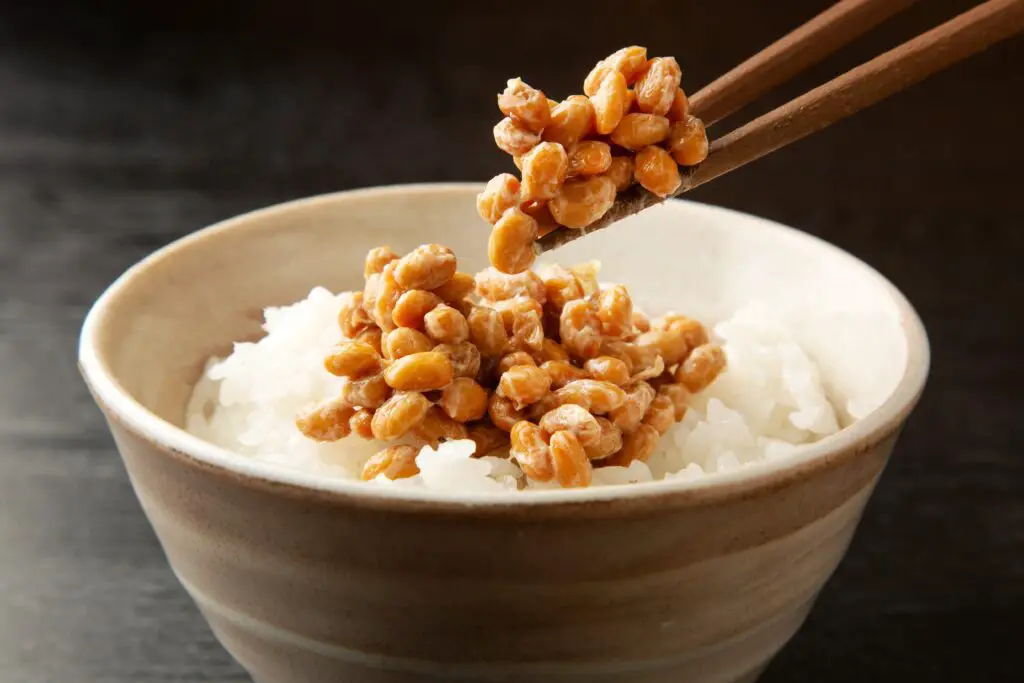
If you’ve never had natto before, imagine opening a container of sticky, stringy beans with a scent that hits your nose like a punch. This traditional Japanese breakfast food is made from fermented soybeans and has a seriously funky aroma, kind of like strong cheese—only slimier. The texture is gooey, and when you stir it up, it gets even stringier, like melted mozzarella but without the pizza. Most Americans who try it either fall in love or instantly regret their curiosity shares BuzzFeed.
Despite its oddness to outsiders, natto is beloved in Japan and loaded with protein and probiotics. Some people add soy sauce and mustard to tone down the intensity, while others just eat it straight over rice. If you’re feeling brave, give it a shot—but don’t say we didn’t warn you. It’s the kind of snack that makes you question your life choices, in the best way adds Substack.
2. Iceland’s Hákarl (Fermented Shark)
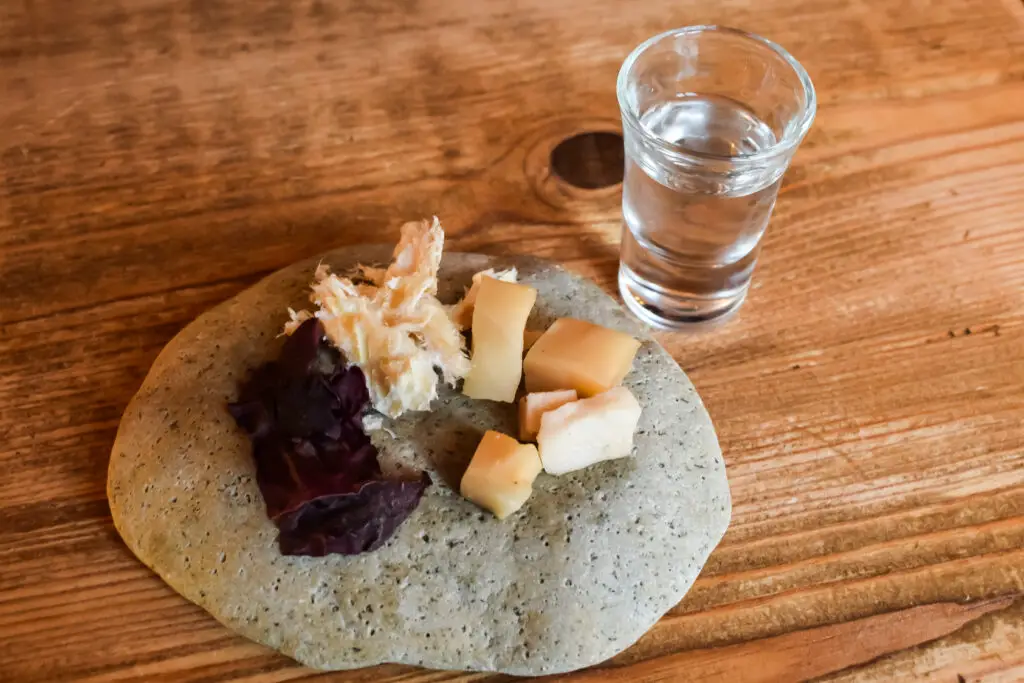
When Anthony Bourdain called hákarl the “single worst, most disgusting and terrible tasting thing” he had ever eaten, he wasn’t exaggerating. This Icelandic delicacy is essentially rotten Greenland shark that’s been buried underground for weeks, then hung to dry. The result? A snack with the unmistakable scent of ammonia and a texture somewhere between jerky and fishy tofu shares Daily Meal.
Icelanders swear by it—some even grow up loving it, often washed down with a shot of Brennivín, a strong local liquor. But for newcomers, it’s more of a rite of passage than a treat. If you can get past the smell (seriously, it lingers), the taste might surprise you—though “pleasant” might still be a stretch explains Forbes. Let’s just say it’s not something you’ll find in the snack aisle at Target.
3. China’s Century Eggs

At first glance, these eggs look like they’ve been left in the fridge since the ‘50s. Century eggs, or pidan, are preserved duck, chicken, or quail eggs that turn dark green and jelly-like after being cured in clay, ash, and other ingredients for several weeks or months. The yolk becomes creamy and grey-green, with a flavor that’s rich, funky, and a bit sulfuric. They’re often sliced and served with tofu or porridge.
To an American palate used to sunny-side-ups and hard-boiled eggs, this might feel like a science experiment gone wrong. But in parts of Asia, they’re a beloved delicacy. Fans say the complex flavor is worth getting past the appearance. You’ll either be intrigued or slightly horrified—and probably both.
4. Philippines’ Balut (Fertilized Duck Egg)
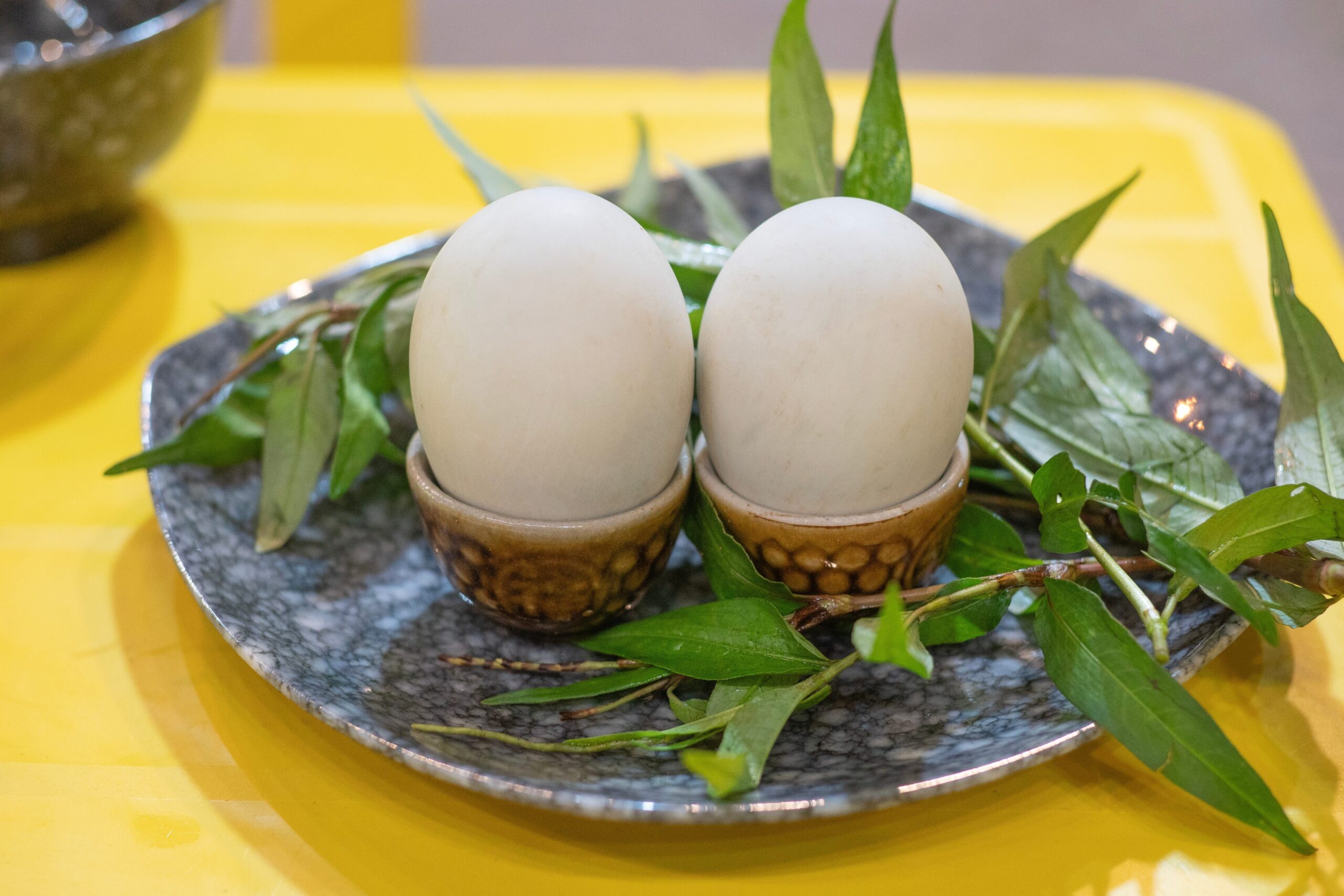
This one’s not for the faint of heart. Balut is a fertilized duck egg with a partially developed embryo inside, feathers, beak, and all. It’s usually boiled and eaten straight from the shell with a pinch of salt. Yes, you’re literally crunching into a baby bird.
Balut is a popular street food in the Philippines, especially for its supposed health benefits and aphrodisiac qualities. Locals describe the taste as a mix of chicken soup and egg custard. It’s not uncommon to hear people say, “Don’t look, just eat.” And honestly, that might be the best advice.
5. Thailand’s Fried Insects
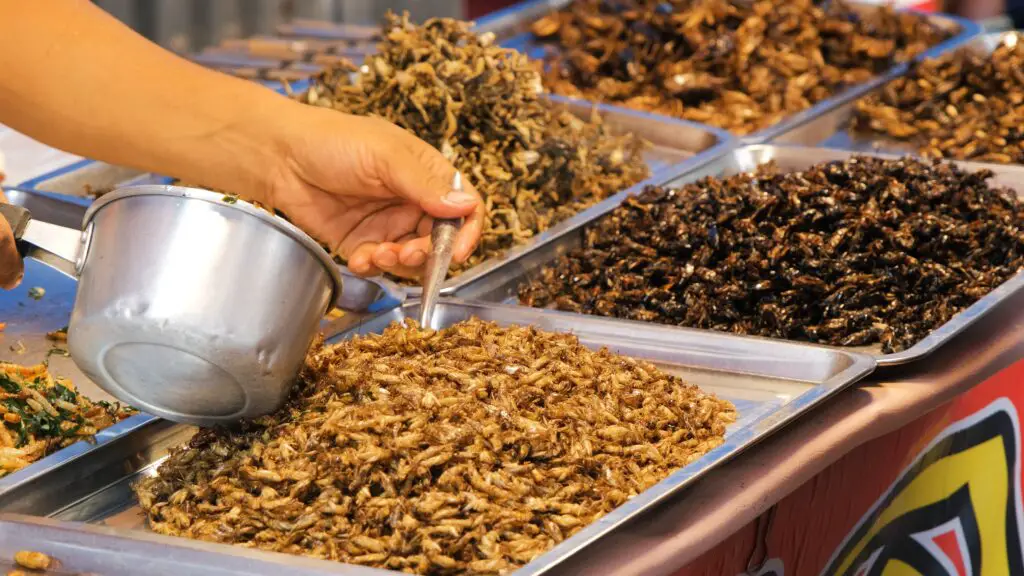
Craving a crunchy snack? How about a handful of crickets or grasshoppers? In Thailand, street vendors sell deep-fried bugs like chips, seasoned with soy sauce, garlic, and sometimes chili powder. They’re packed with protein, eco-friendly, and surprisingly tasty—if you can get past the legs.
Some folks describe them as tasting like popcorn or sunflower seeds, with a slightly earthy finish. If you’re adventurous enough, you’ll find ants, beetles, and even giant water bugs on offer. It’s a far cry from cheese puffs, but not as horrifying as it sounds. Once you’ve had one, you might even go back for seconds.
6. Korea’s Beondegi (Silkworm Pupae)
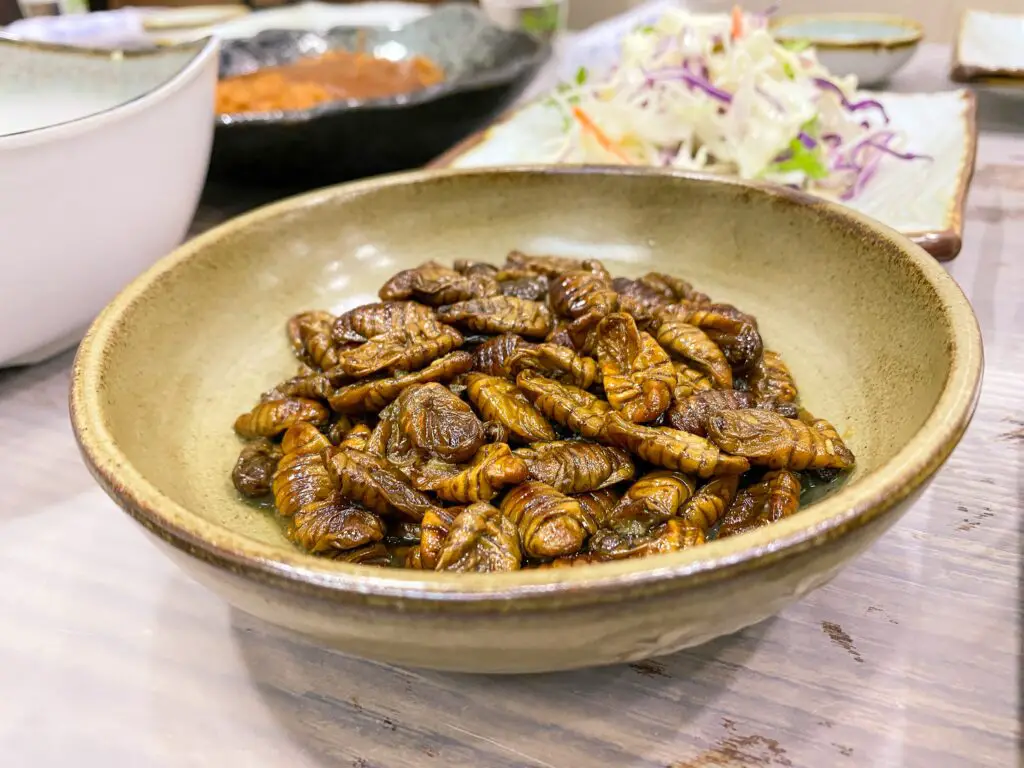
Beondegi is one of those snacks that you smell before you see. These steamed or boiled silkworm pupae are commonly sold from street carts in South Korea, often served in paper cups with toothpicks. The scent is nutty, fishy, and unmistakably beondegi. Texture-wise, they’re chewy on the outside and soft in the center.
They’re a nostalgic treat for many Koreans, bringing back childhood memories of cold nights and warm snacks. For foreigners, though, it can be a rough first bite. The flavor is earthy and a little musty—some say like boiled peanuts that went slightly off. But if you love unusual textures, this might be your new favorite oddity.
7. Sweden’s Surströmming (Fermented Herring)

Let’s get this out of the way: Surströmming is banned on many airlines because of its smell. This Swedish canned herring is fermented until it’s so pungent it’s usually opened outdoors—preferably far away from your house. When you finally pop the lid, you’ll be hit with a wave of rotten-egg-meets-old-socks odor that lingers for days.
Still, Swedes eat it on thin bread with potatoes and onions and consider it a delicacy. The fish itself is incredibly salty and tangy, with a texture that borders on mushy. It’s one of those foods that seems designed to test your limits. Most Americans would tap out after the first sniff, but if you make it to the taste test, you deserve a medal.
8. Mexico’s Chapulines (Toasted Grasshoppers)
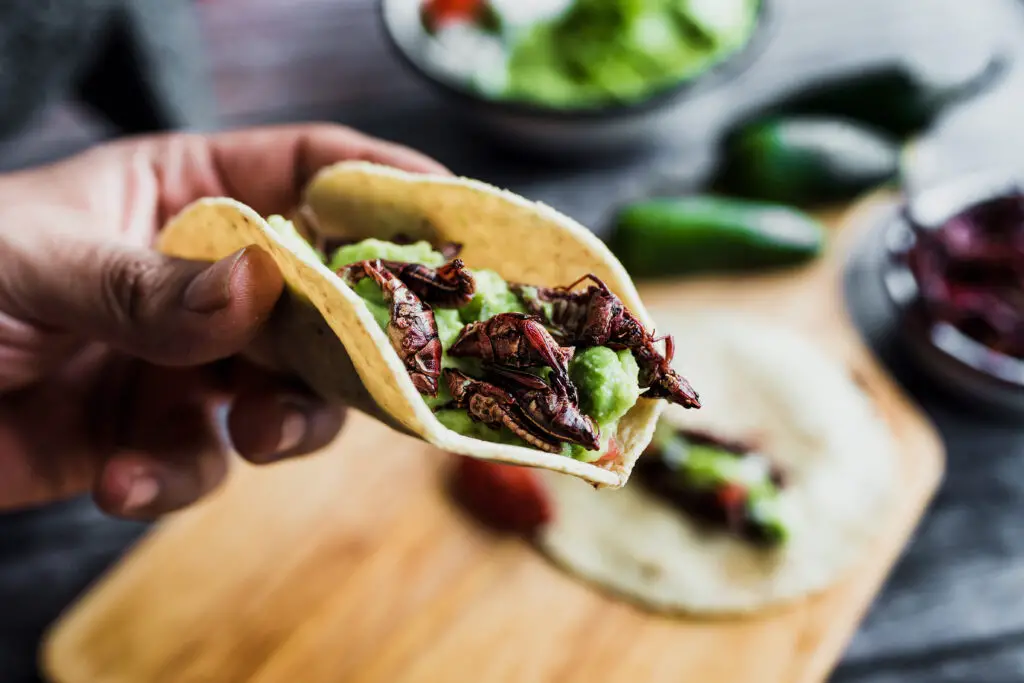
While fried bugs might be shocking, chapulines are a crunchy snack with serious flavor cred. These toasted grasshoppers are seasoned with lime, chili, and garlic, giving them a zesty kick. In Oaxaca, they’re tossed on everything from tacos to guacamole, adding a satisfying crunch and a punch of protein.
The legs can get stuck in your teeth, but most people find the flavor addictive. They’re a lot more approachable than they sound, and the bold seasoning helps ease the initial “wait, I’m eating a bug” moment. If you’re game, chapulines might just become your new favorite taco topping. Plus, it’s a great party story.
9. Norway’s Smalahove (Sheep’s Head)
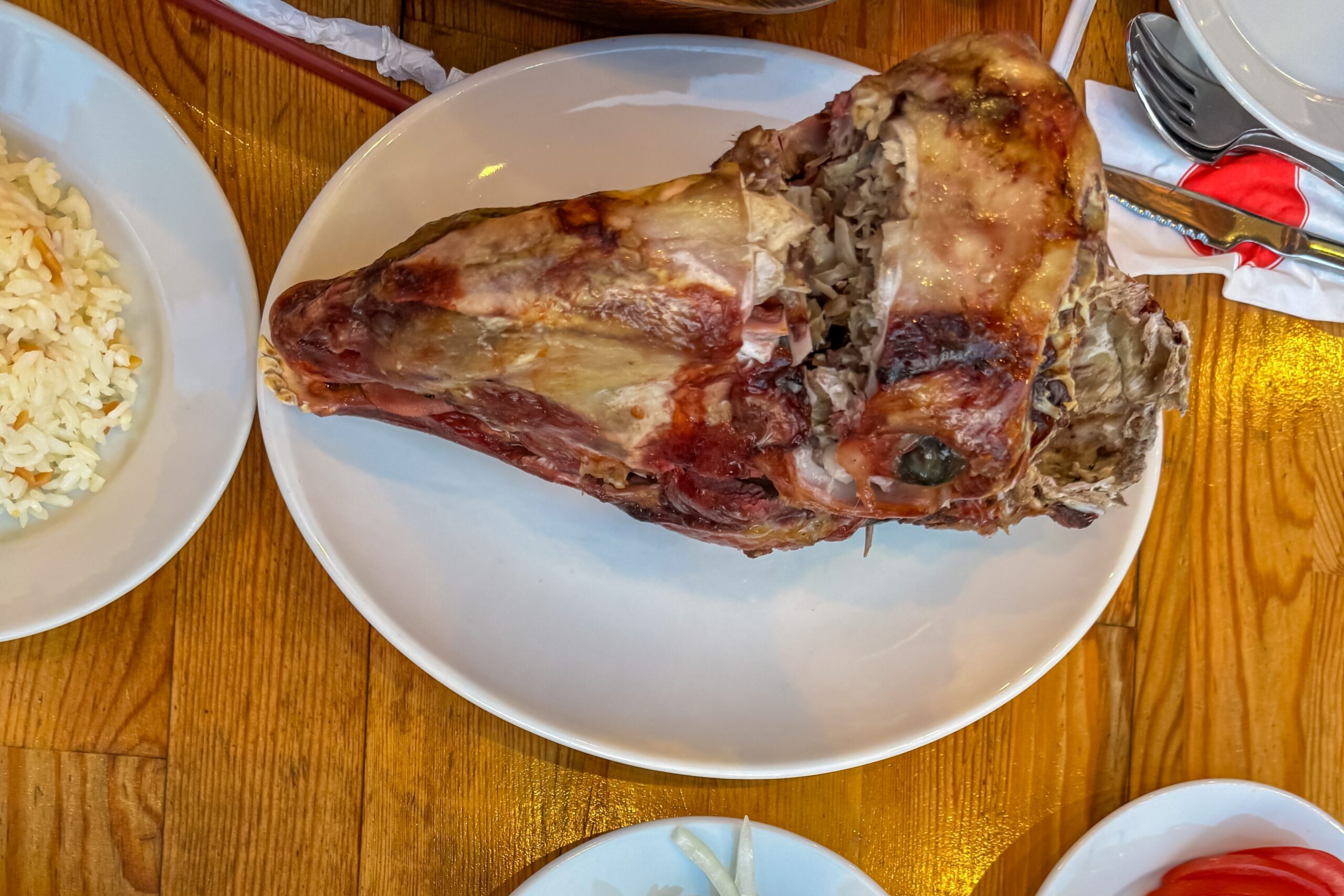
Yes, you read that right—this snack involves eating an actual sheep’s head. Smalahove is traditionally served around Christmastime in parts of Norway. The head is split, smoked or boiled, and then served with potatoes and rutabaga. You’re expected to eat everything, including the tongue, eyes, and cheeks.
It’s definitely a cultural experience and not something you’ll find in American diners anytime soon. The texture varies, with the eyes being jelly-like and the cheek meat tender and fatty. While it may sound gruesome, it’s deeply rooted in tradition and celebration. Still, it’s probably not what you’d grab during a Netflix binge.
10. China’s Chicken Feet

They’re not just for soup stock—chicken feet are a popular snack across Asia, especially in China where they’re marinated, steamed, or deep-fried. They’re mostly skin, tendons, and cartilage, so there’s not a lot of meat. Eating them is a bit of a puzzle, as you nibble around tiny bones and spit them out.
Flavored with everything from black bean sauce to vinegar and chili, they’re more about texture than taste. If you’re squeamish about bones or the idea of feet, this may not be your jam. But once you get the hang of it, they can be pretty fun to eat. Just maybe not during a first date.
11. India’s Pani Puri

Pani puri might look like a dainty snack, but the flavor explosion can catch you off guard. These hollow, crispy shells are filled with spicy tamarind water, potatoes, chickpeas, and tangy chutney. You pop the whole thing in your mouth at once, and boom—your taste buds get hit with spicy, sour, sweet, and salty all at once.
They’re sold by street vendors and eaten standing up, often in rapid-fire succession. The sensation can be intense if you’re not used to such bold contrasts. Most Americans aren’t used to sipping spiced water from a cracker ball, but it’s addictive once you dive in. Just keep some tissues handy—it can get messy.
12. Nigeria’s Suya (Spicy Grilled Meat with Peanut Coating)

While grilled meat isn’t unusual, Nigeria’s suya takes it to a whole new level. It’s thin slices of beef or chicken rubbed in a fiery spice blend that includes ground peanuts, ginger, and chili powder. The result is a smoky, nutty, spicy snack that lights up your mouth in the best way.
You’ll usually find it sold by street vendors, wrapped in paper with raw onions and tomatoes on the side. The peanut coating surprises a lot of people—it’s not sweet like you might expect. Instead, it adds a deep, savory flavor that’s unforgettable. Americans might not think of peanuts as a spice base, but suya will make you rethink everything.
13. Laos’ Ant Egg Soup
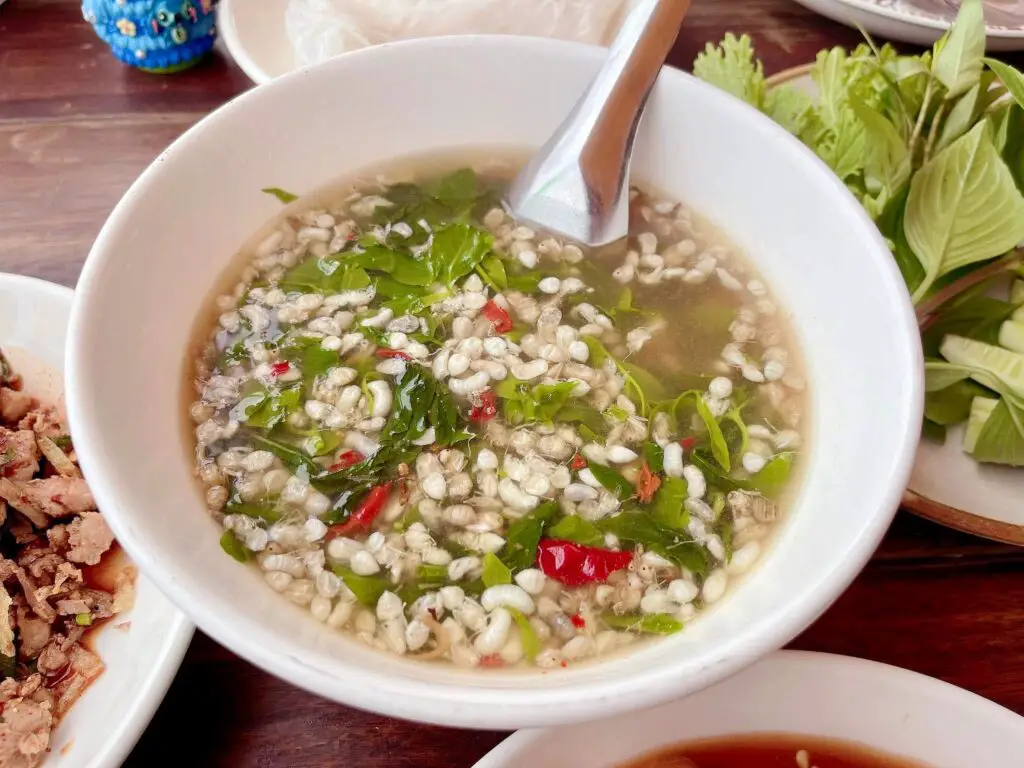
If you thought regular eggs were adventurous, try a spoonful of ant egg soup. This delicacy from Laos features white ant eggs (sometimes with baby ants), swimming in a tangy broth made with lemongrass, herbs, and sometimes chunks of fish. The eggs have a soft pop to them, kind of like fish roe, but with a milder flavor.
It’s a favorite in rural areas and considered a treat when ants are in season. The sourness of the broth balances the richness of the eggs, making it more refreshing than you’d expect. To American taste buds, the idea of ant anything might be a hard sell. But locals swear by its flavor—and its protein punch.
